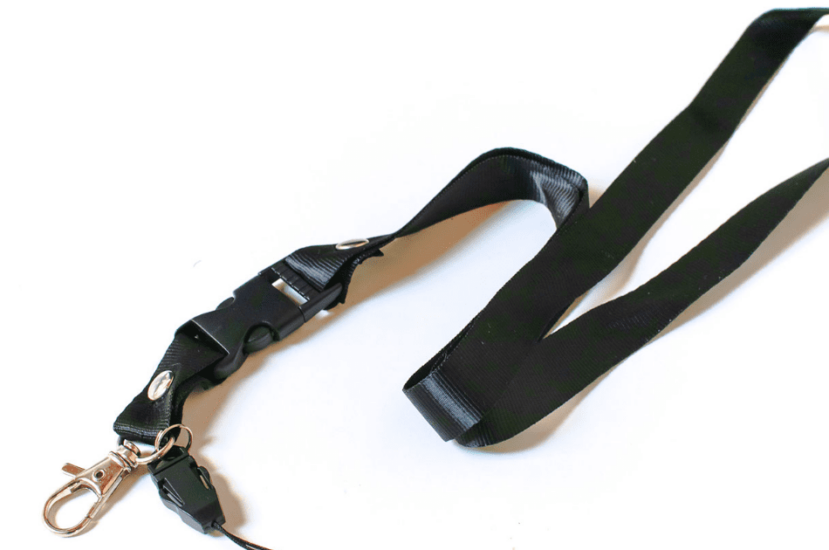Are you searching for the ideal lanyard to suit your requirements?
Whether you’re a fashionista seeking an eye-catching accessory or an outdoor adventurer searching for durability, this blog post has all the tips and advice you need.
We’ll discuss the different types of lanyards available and how to determine which one is suitable for you; plus, we’ll include important advice on caring for and maintaining your new purchase.
So whether you’ve been wearing lanyards since childhood or this will be your first time investing in one, let’s look at our definitive guide on choosing the perfect lanyard!
What Is a Lanyard and Why It Matters
A lanyard is an item such as a rope, cord, or chain with an attached hook that can be used to secure items during transit.
It’s essential for anyone transporting fragile or valuable items like electronics, furniture, artwork, or tools; its primary function is providing secure attachment points for tying down objects and preventing them from falling out of vehicles or containers during transport.
Lanyard Uses
A lanyard can serve several purposes:
- You can use it to hold luggage on airport trolleys and other wheeled transport carts.
- You can use it to aid in sporting activities such as boating and fishing that require attaching hooks to ropes so objects can be securely pulled close with either hand or machine-driven winches.
- You can use it as a safety device for outdoor adventure sports like mountaineering, rock climbing, and abseiling, providing extra security against slips and falls by connecting securely between two points that give climbers more excellent range of movement while delivering assurance should they lose their grip or footing on something slippery.
- You can secure your items during relocation.
- You can use it to prevent cargo from shifting within a car boot.
Benefits Of Utilizing A Lanyard
Utilizing a lanyard will keep your belongings secure no matter the mode of transport – it keeps everything inside boxes during transit to prevent loss or damage due to loose lids or flaps flying open during transit.
Furthermore, using one reduces potential spills onto roadsides since everything is tied together securely with this convenient tool!
Furthermore, lanyards ensure valuables remain intact no matter how long they’re stored in storage containers – no more worrying about mysterious disappearances!
This straightforward yet effective solution provides peace of mind during long-distance travel!
Understanding and Selecting the Appropriate Lanyard for Your Needs
When selecting the ideal lanyard, it’s essential to consider its intended usage. For example, are you using it primarily as a keychain or lanyard?
Or are you searching for something more substantial, like security measures or promotional tools?
Knowing your purpose will help streamline the selection process.
For instance, lightweight materials such as cotton, nylon, or polyester may be best suited if you’re searching for an everyday decorative accessory.
On the other hand, if durability and access control functions like ID verification and ticket scanning are needed, then an industrial-grade lanyard constructed of heavy-duty materials like Kevlar or stainless steel may be more suitable.
Evaluate Materials and Construction
Each lanyard should be thoroughly assessed to guarantee long-lasting functionality and optimal performance.
Lanyards are typically constructed from synthetic fibers such as cotton, rayon, or polyester; higher quality ones usually feature multiple more robust materials like leather or silicone attached with metal snap buckles and plastic clips that securely hold items like keys or IDs.
When selecting a lanyard, it must have enough strength and flexibility not to break when tugged on during everyday use.
It also offers easy removal when necessary without excessive force being applied too often.
Choose the Appropriate Length
When selecting a lanyard length, one should consider personal preference and how much movement is necessary when wearing it (e.g., reaching up).
Standard lanyards typically measure 16″ to 24″, with longer ones going up to 32″, giving users more freedom of movement without having to detach their accessory whenever they need access to restricted areas where dangling items need clearance from above head height.
For those needing greater mobility, extra extended sizes (up to 44″) may provide more freedom without having to remove their accessory every time they need access to restricted places where items must be cleared without detaching them altogether may be beneficial when choosing this option.
Regardless of which option works better within your lifestyle, remember to invest in high-quality materials for maximum longevity; proper maintenance practices should always be observed, irrespective of the type chosen!
Tips for Maintaining and Caring for Your Lanyard
Regularly clean your lanyard with mild soap and warm water to keep it in top condition.
Then, allow the lanyard to air dry completely before storing it in a cool, dark place away from direct sunlight.
Store each portion separately and secure them tightly at both ends to prevent tangling or knots.
Furthermore, inspect the lanyard before usage to identify any signs of damage so you can take appropriate action.
Pay Attention to Environmental Factors
Like all accessories and apparel items, environmental elements can affect a lanyard’s lifespan and quality over time.
Sunlight is one of the primary culprits for fading or discoloring materials like leather or rope – so we recommend avoiding excessive exposure when possible.
Humidity also has the potential to warp or weaken materials like leather or cord, so keep this in mind during storage as well as usage for maximum longevity.
Avoid Overstretching Your Lanyard
When wearing a lanyard around your neck or attached to clothing items such as jackets or bags, be sure not to pull on the end excessively, which could weaken or even break your accessory over time due to uneven tension applied along its length.
Overstretching may also reduce flexibility, making adjusting certain areas difficult in the future – mainly if plastic clips are used instead of metal fastenings that become brittle if stretched too often.
Conclusion
Are you searching for an attractive and reliable way to store your items safely? Then lanyards could be the ideal solution.
With so many types available, research and understand what factors go into selecting the right one for your requirements.
Finding the ideal lanyard comes down to personal preference: by understanding what matters most in style, function, comfort, and durability, you can find an option that fits your lifestyle and budget.
Don’t forget to also factor in environmental elements like wind speed or water resistance!
We hope this guide has been beneficial in making an informed decision about which lanyard is ideal for you.




